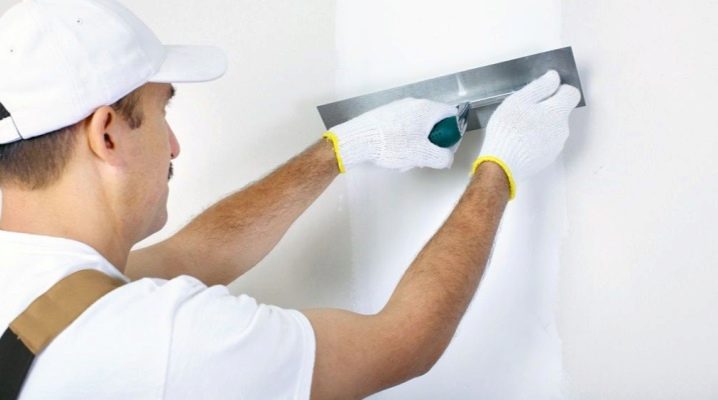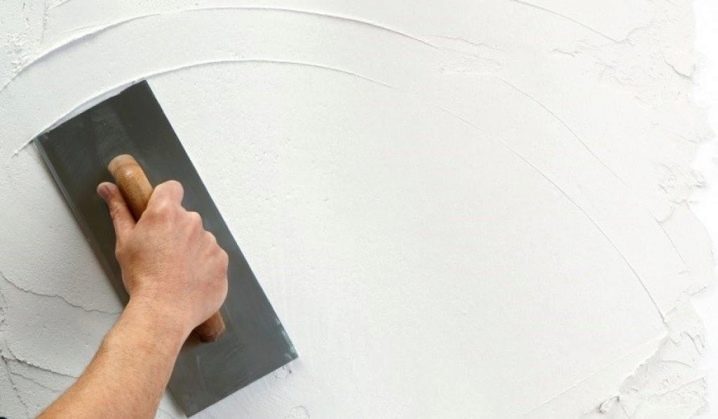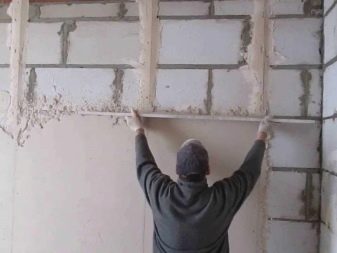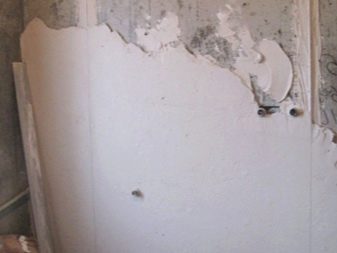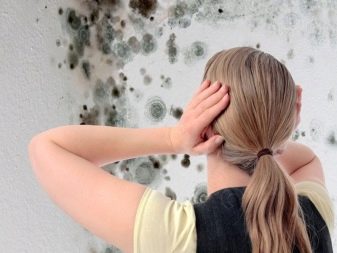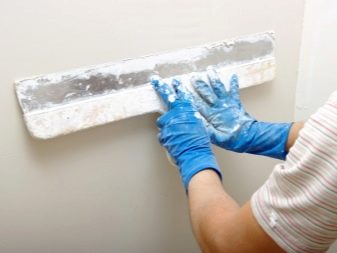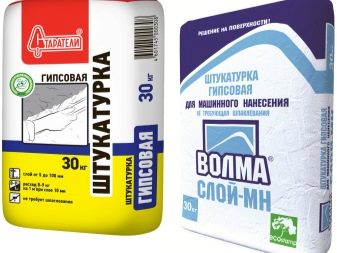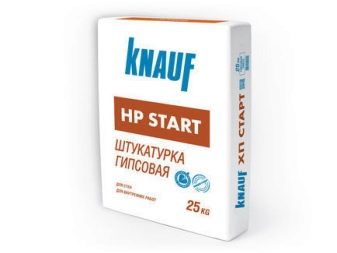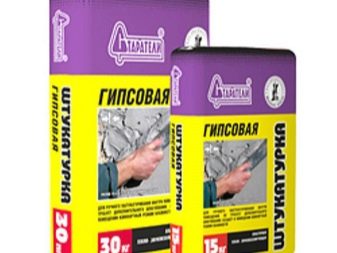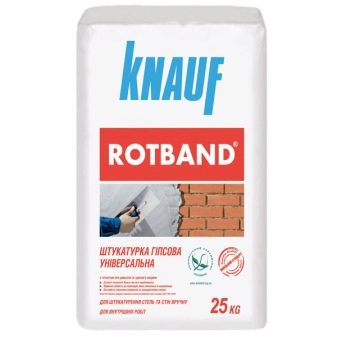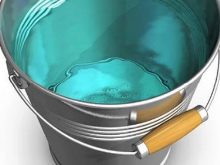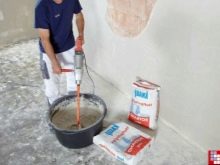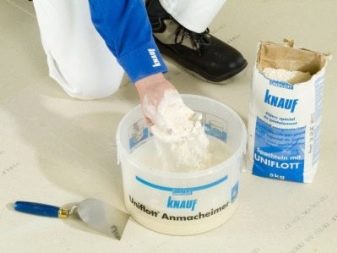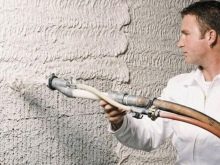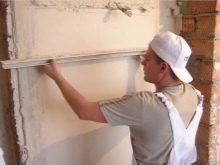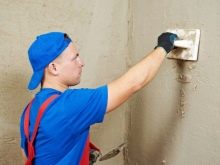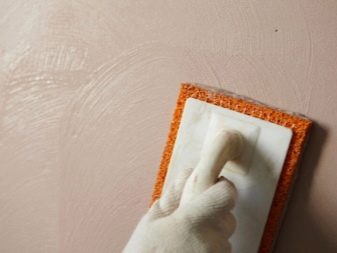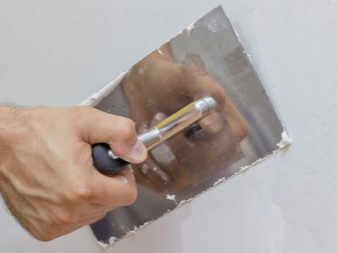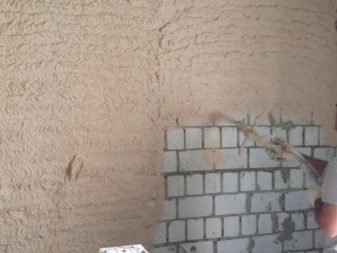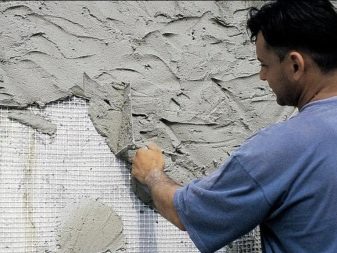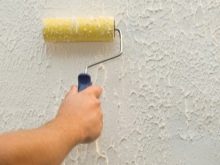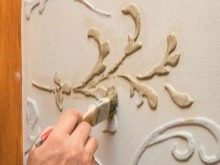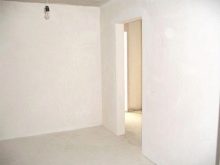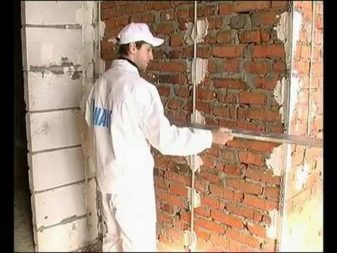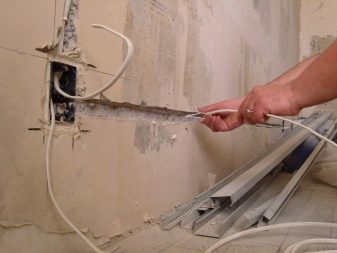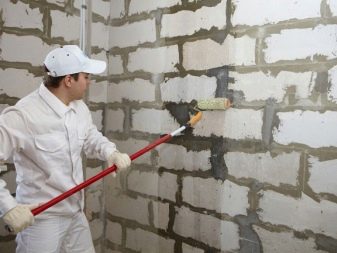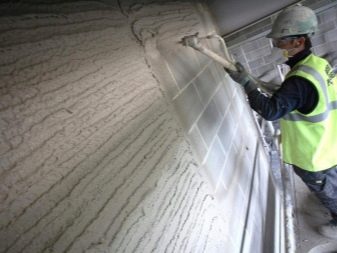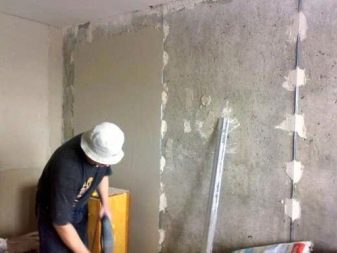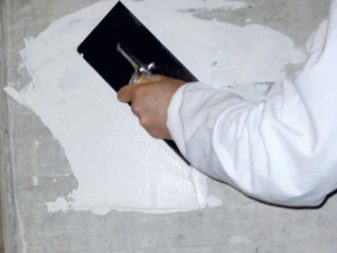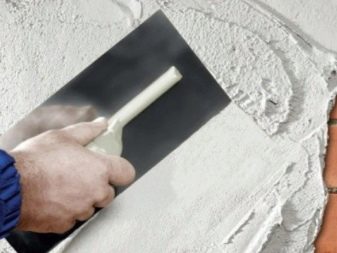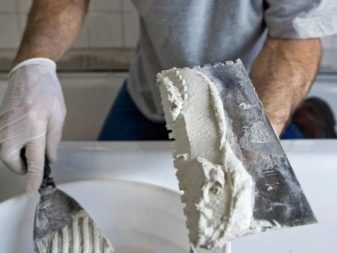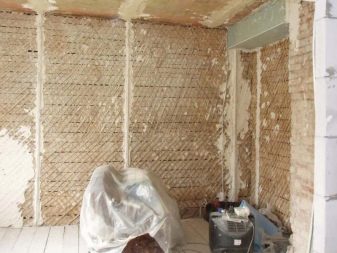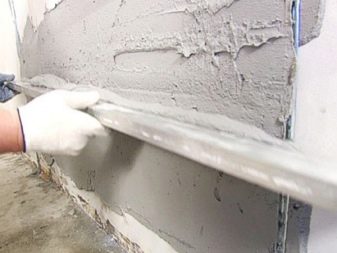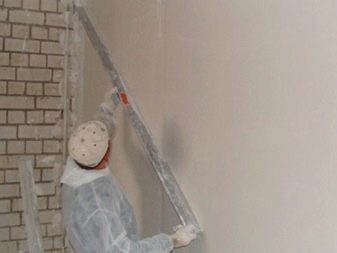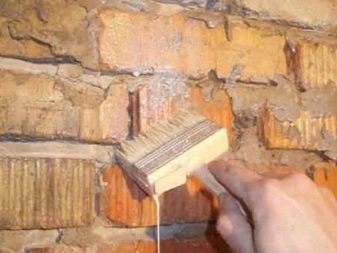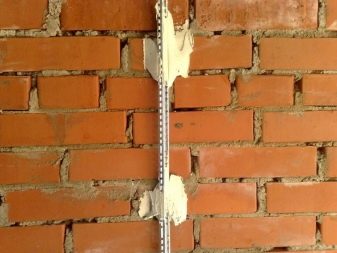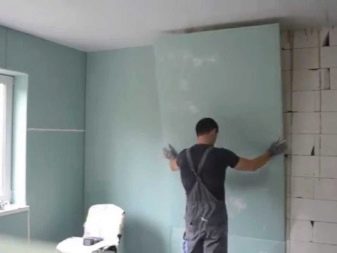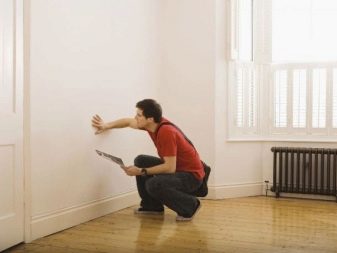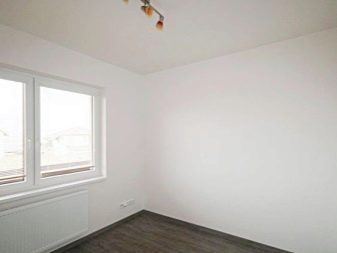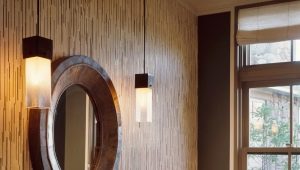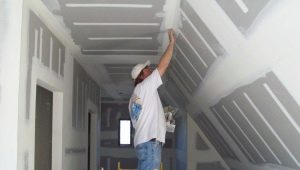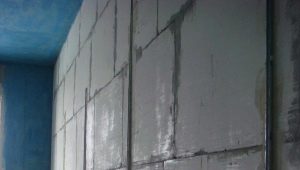Gypsum plaster wall decoration rules
Any repair is accompanied by plastering of the walls, since this type of construction work not only makes it possible to eliminate surface defects, but also prepares the foundation for decorative finishing. One of the most popular types of plaster is gypsum mortar. It is characterized by high quality, plasticity and durability.
In addition, this plaster is easy to use and is perfect for wall decoration in all residential areas. Plastered plaster mixture surface becomes smooth and smooth, after which it can be covered with wallpaper or paint.
Advantages and disadvantages
Gypsum plaster is a versatile building material, which is widely used in construction and finishing works. It is made according to special technologies from environmentally friendly raw materials, so it has a unique structure and is easily applied to the walls. Like any mortar, plaster has its advantages and disadvantages.
Its positive characteristics include:
- Naturalness. The main component of the material is gypsum, it is a natural material and does not contain harmful substances. Therefore, this lining is completely safe for health.
- Low weight. Due to this indicator, the structures being processed acquire perfect integrity and do not require additional reinforcement.
- No shrinkage. After finishing, the walls become smooth and no cracks appear on their surface.
- High moisture resistance. Gypsum quickly hardens and dries. Drying time takes several hours. If water gets on the finished layer of plaster, it will not affect the quality of the coating, and the finish will not crumble or crack in the future.
- Resistance to the formation of fungus and mold.
- Creating a microclimate in the premises. The porous structure of the material can absorb excess moisture, and at high temperature it releases it back.
- Good sound and heat insulation.
- High fire safety.
- Plastic. It is easy to work with this type of plaster, as the application is quick.In addition, the solution perfectly removes all the irregularities of the walls.
- Economical expense. Unlike other mixtures, gypsum mortar is applied in a single layer up to 60 mm thick, which allows to save it.
As for the shortcomings, they are few:
- It is impossible to carry out finishing in rooms where the increased humidity is constantly observed.
- The material is characterized by high cost.
- The work must be done in small sections. Plaster quickly hardens, so you can not prepare a solution of large volumes.
Material selection
Gypsum plaster is considered the main finishing material, which is widely used in modern construction. Today the market is represented by a huge selection of gypsum-based mixes, with which you can plaster the surface of the walls. Therefore, before you make a purchase, you need pay attention to the quality properties of the material. It must have a uniform structure and comply with all building codes.. A good plaster perfectly aligns the base, makes it smooth and does not create stains, stains or bubbles on the surface.
Important also choose the material, taking into account the climatic conditions in the room where the finishing is planned. Although gypsum plaster is moisture resistant, it is undesirable to expose it to constant exposure to steam and condensate.
When plastering large areas, it is best to give preference to solutions that are applied in one layer, thanks to which the coating thickness will be small and the material consumption will decrease.
You can buy gypsum plaster, both foreign and domestic production. Knauf and Volma trademarks have worked well.. Their products are used for interior decoration, it perfectly prepares the walls for decoration, there is no need to wipe their surface. It is worth noting that regardless of the chosen plaster, it must be used strictly in accordance with the requirements, indicated on the package. Otherwise, the solution will lose its properties, and the application technology will be performed incorrectly.
How to dilute the solution
Before starting to level the walls should dilute the solution. To obtain gypsum plaster will need:
- dry powder;
- water;
- Master OK;
- drill;
- tank, where you can knead the mixture.
The powder is poured into a dry container, and water should be gradually added to it. To get a quality solution, It is recommended to follow the cooking recipe, as a rule, 1.8 l of water is required for 3 kg of the mixture. If plaster sticks to the container walls, this process can be prevented.
To do this, plaster must be diluted in this way:
- pour water;
- fill the desired portion of powder.
It is necessary to mix the solution with the help of an electric drill, it is best to do it slowly, so that the mixture will turn out to be a homogeneous consistency without lumps. Then finished plaster give time to settle, and it is re-mixed. It is advisable to use the prepared solution for 20 minutes, as it quickly sets and hardens.
How to put your own hands: the order of work
Plaster walls is not particularly difficult, so it can be done independently, without the help of experts. It is necessary to begin work with preliminary wetting of the surface with water.. This is usually done with a spray or a special brush.
A thick layer of mortar is poured onto the wetted foundation with a trowel so that it hangs slightly above the surface of the wall. Lay the mixture should be moderate, otherwise plaster under its own weight may collapse.
The technology of performing these works requires a uniform distribution of the solution, so after preparing the walls, the installation of beacons is done. To remove the excess mixture, take the rule and carry them over the beaconsafter which it is moved in zigzag movements from right to left.
If you apply plaster correctly, then at the end of the alignment all voids and irregularities will be filled with mortar. To obtain a smooth base, the finish must be rubbed and glossy.
Gypsum plaster is often used for finishing brickwork, it can be applied on cement and concrete surfaces. In the event that the walls have large defects, the mixture should be thrown in several walks, waiting for the previous layer to set.
To ensure greater durability of the coating, it is recommended to use a paint grid.. It is placed around the perimeter of the working surface and fixed with a solution.The grid allows you to improve the adhesion of the finishing material with the base of the wall, as a result, the coating does not sag and does not crack.
At the end of plastering, the lighthouses are removed, and the grooves formed under them are additionally sealed with plaster and re-align. If the beacons are not removed, then rust will appear on them over time, which can tread through a layer of finishing.
The walls after facing with gypsum mortar are considered ideally prepared for the subsequent pasting with wallpaper or painting. In addition, for their decoration, you can apply special stencils and in this way apply original drawings or patterns. Looks beautiful, for example, an imitation of Venetian plaster.
Preparation of the room and surface
The plaster mix will make the walls even and smooth if it is applied on a previously prepared substrate. Also, before finishing it is important to acquire not only material and appropriate tools, but also to draw up a detailed plan of activities. Therefore, in the first place before using the plaster prepare the walls and the room.
To do this, carry out the following work:
- Complete all kinds of "wet" finishes, as the plaster can be carried out only on a dry surface.
- Install wiring and communications system.
- The metal elements are covered with a protective layer, since the gypsum mortar can cause metal corrosion.
- Degrease the base and clean it from colored spots or traces, if any.
- Do the priming.
- Protect protruding corners. These structural elements are most exposed to mechanical damage, so they need to impose special corners.
- Close up and strengthen the joints.
- Take out of the rooms all the furniture and bulk items. If this is not possible, they can be covered with plastic wrap.
- In the room where plastering of walls is planned, all windows and doors should be closed, as the finishing technology will be disturbed due to possible drafts.
Performance of work with and without lighthouses
Many masters plaster walls without the use of beacons. This method is most often suitable for those surfaces in which defects are minor, and if you only need to trim the base under the decorative layer. In this case, determine the deviation of the plane from the desired level. This is done using the rule, which is pressed against the wall.
First, the large cavities are sealed with a mixture, then the solution is distributed over the entire area, leveling it. Then re-perform surface inspection. If there are no gaps between the rule and the wall, then the work is done correctly., and you can begin to plaster the next section. When the base completely hardens, it must be sanded and covered with decorative trim.
Simplifies work with plaster installation of beacons. Finishing is carried out similarly to the previously described method, but in this case special guides are fastened on the wall, along which the base is leveled.
It is important to ensure that the lighthouses are placed horizontally in relation to the plane. In addition, the distance between them must be calculated in such a way that the layer of the superimposed solution is minimal. This will not only speed up the work, but also save material.
Thin layer: how to?
During the alignment of the walls a huge role is played by the thickness of the plaster layer.Depending on the presence of defects on the surface, it can be different - in one area it is thinner, and in the other one is thicker.
In addition, for each type of coating there are certain standards for the application of the solution. When plastering brickwork its thickness should not exceed 20 mm. This results from the fact that the relief structure of walls needs the maximum thickness of plaster. If the layer is made minimal, the coating may explode and crack during operation.
Concrete walls trimmed with a layer of 2 cm. Such work is often performed with the use of reinforcement. For drywall, the minimum solution thickness is 1 cm., but in this case it is recommended to strengthen the plaster with fastening nets. The ideal surface for cladding is cellular concrete, it has a smooth base and good adhesion. Therefore, for such walls it is sufficient to distribute the mixture with a layer of 5 mm.
There are also wooden walls that need to be prepared for decoration. Most often they apply a plaster solution of no more than 2 cm.This thickness is sufficient to level the coating and not to make the structure heavy.In addition, the appearance of the gypsum mortar plays an important role in the lining.
As a rule, for plaster the minimum thickness is considered to be 5 mm, if the layer is made smaller, the coating will turn out to be of poor quality and will not last long.
Important: the last stage
The completion of plastering is the grouting of walls. It can be carried out only after complete drying of the surface. Before grouting, dilute a small portion of the solution and moisten the working area with it. To properly perform the process, it is desirable to divide the wall into separate zones of 1 m². The mixture is applied to the trowel and spreads it in a thin layer on the base, after which they make a strong pressure and smooth everything at an angle of 45 °.
The selected square is overwritten until the solution ceases to accumulate on the board. As a result, the wall will get a smooth and even look. Similarly, carry out work with other sites. It is necessary to rub the basis continuously.
Tips and tricks
Most homeowners prefer budget repair, in which most of the construction work is done by hand. There is no exception to this and plaster walls.
This process is not difficult, but in order to do everything correctly, the following recommendations of experienced craftsmen can help:
- Plastering need only those walls that have significant defects and irregularities. This will help not only speed up the repair, but also save money on finishing. Therefore, the control of the surfaces is done first, and if the lighting falls on them at an oblique angle, then the alignment is done. To cover with a mortar it is necessary also those walls on which it is planned to fix the plinth.
- It is possible to provide good durability to a covering by means of the primer prepared from water and PVA glue.
- If the plaster is applied to the brickwork, and the temperature in the room exceeds 23 ° C, then its base should be thoroughly moistened.
- When aligning walls, it is advisable to use beacons, they allow you to set the level correctly and determine the optimal thickness of the finish.
- In the event that the base is single-layered, it must be leveled immediately after coating with a solution. You can also use special trowels for this, they are used after the coating sets to the surface.If the finish provides a second layer, then it is important to wait for the solution of the first layer to set.
- To make high-quality plaster walls allow gypsum sheets. They are suitable in cases where it is necessary to level very large areas of the room, as the constant preparation of the solution can slow down the work. The mixture hardens quickly and cannot be used after that.
- Before the start of plastering, the working area must be calculated and the level of all differences and slopes is determined. Thanks to such calculations, it is possible to calculate the material consumption in advance, and make estimates.
To increase the moisture resistance of the walls will allow high-quality waterproofing. This is especially true plaster surfaces in bathrooms and in the kitchen.
- Small and large cracks may appear after finishing, if the solution is poorly mixed or dried quickly under the influence of drafts. Therefore, the mixture should be thoroughly mixed and plastered only in enclosed spaces. In addition, the surface should be well polished, and if the mixture is applied in several layers, then a building grid should be used.
- Putty can eliminate only minor irregularities, reaching 5 mm, since its layer can not exceed 5 cm. Therefore, if the walls have large drops, then they are best to first hide under drywall, and then apply the mixture. It is also important to make calculations of the geometry of the room and make all the angles at 90 °, since the irregularities and curvature will cause inconsistency of wallpaper and the formation of a wrong gradient over the cabinets.
- Gypsum plaster should be purchased taking into account the climatic conditions in the room. If there is a constant temperature drop and high humidity, then it is necessary to give preference to special types of mixture.
It is impossible to add coloring agents to the solution, as they will worsen the property of the material. It is worth remembering that the main task of plaster is the alignment of the walls, and not decorative decoration.
About plaster walls plaster mix, see the following video.
